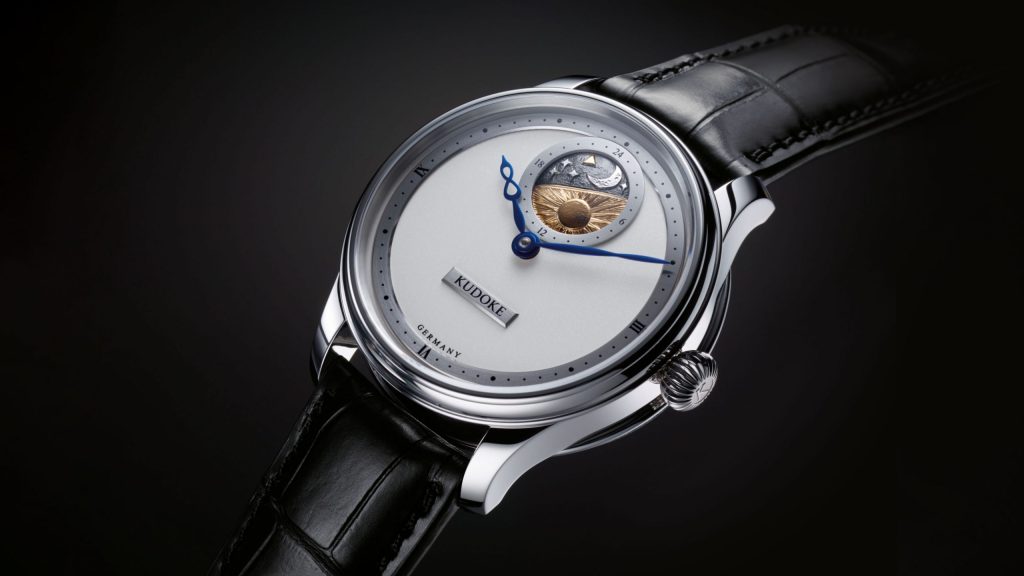Kudoke
The star of German independent watchmaker Stefan Kudoke has been steadily rising in recent years. Driven by the principle of individuality and a commitment to craft, the artisanal maker, specializing in hand engraving and skeletonization, honed his skills at a number of large Swiss brands before establishing his eponymous brand in 2005.
Since then, he’s been refining his craft. He took inspiration from the world of traditional English pocket watches for his second creation, the sensibly named Kudoke 2. This release struck a chord, winning Kudoke the coveted Petite Aiguille at the 2019 Grand Prix d’Horlogerie de Genève. The next chapter of Kudoke’s story is set to be just as exciting.

Interviews
Dressing the Stars: Delugs for Kudoke K2 ‘Starry Night’
May 11, 2023

Interviews
Dressing the Stars: Delugs for Kudoke K2 ‘Starry Night’

Limited Edition
Grail Watch 8: Kudoke K2 ‘Starry Night’
May 11, 2023

Limited Edition
Grail Watch 8: Kudoke K2 ‘Starry Night’

Limited Edition
Grail Watch 8: Kudoke 2 ‘Starry Night’
May 8, 2023

Limited Edition
Grail Watch 8: Kudoke 2 ‘Starry Night’

News
Introducing the Kudoke 3: A Compelling Twist on Telling Time
Mar 27, 2023

News
Introducing the Kudoke 3: A Compelling Twist on Telling Time

News
Kudoke Skeleton Plays a Starring Role in Last Looks
Oct 17, 2022

News
Kudoke Skeleton Plays a Starring Role in Last Looks

Video
Visiting the Atelier of Independent Master Watchmaker Stefan Kudoke
Sep 14, 2022

Video
Visiting the Atelier of Independent Master Watchmaker Stefan Kudoke

News
Kudoke and The Limited Edition Present Kudoke 2 British Heritage
Jul 1, 2022

News
Kudoke and The Limited Edition Present Kudoke 2 British Heritage

Interviews
Trailblazers: German Independent Watchmakers
Jun 7, 2021

Interviews
Trailblazers: German Independent Watchmakers
You may also like

Editorial
Citizen Unveils Series8 880 GMT & 890 Limited Edition Models Inspired by Japan’s Cityscape Aesthetic

Editorial
Citizen Unveils Series8 880 GMT & 890 Limited Edition Models Inspired by Japan’s Cityscape Aesthetic

News
Audemars Piguet Concludes RD Series With Royal Oak “Jumbo” Extra-Thin Flying Tourbillon Chronograph RD#5

News
Audemars Piguet Concludes RD Series With Royal Oak “Jumbo” Extra-Thin Flying Tourbillon Chronograph RD#5

News
Schwarz Etienne Returns to Simplicity with 1902 Petite Seconde

News
Schwarz Etienne Returns to Simplicity with 1902 Petite Seconde
Shop Watches

Bvlgari
Bvlgari Octo Finissimo XX Anniversario
USD$21,300.00

Armin Strom
Armin Strom × Revolution Dual Time GMT Resonance “Tremblage”
USD$124,850.00

Celadon Haute Horlogerie
Celadon Cloisonné Enamel Imperial Four Nobles Box Set
USD$43,250.00

Celadon Haute Horlogerie
Celadon Cloisonné Enamel Imperial Four Nobles ‘Winter / Plum Blossom (梅)’
USD$10,850.00



